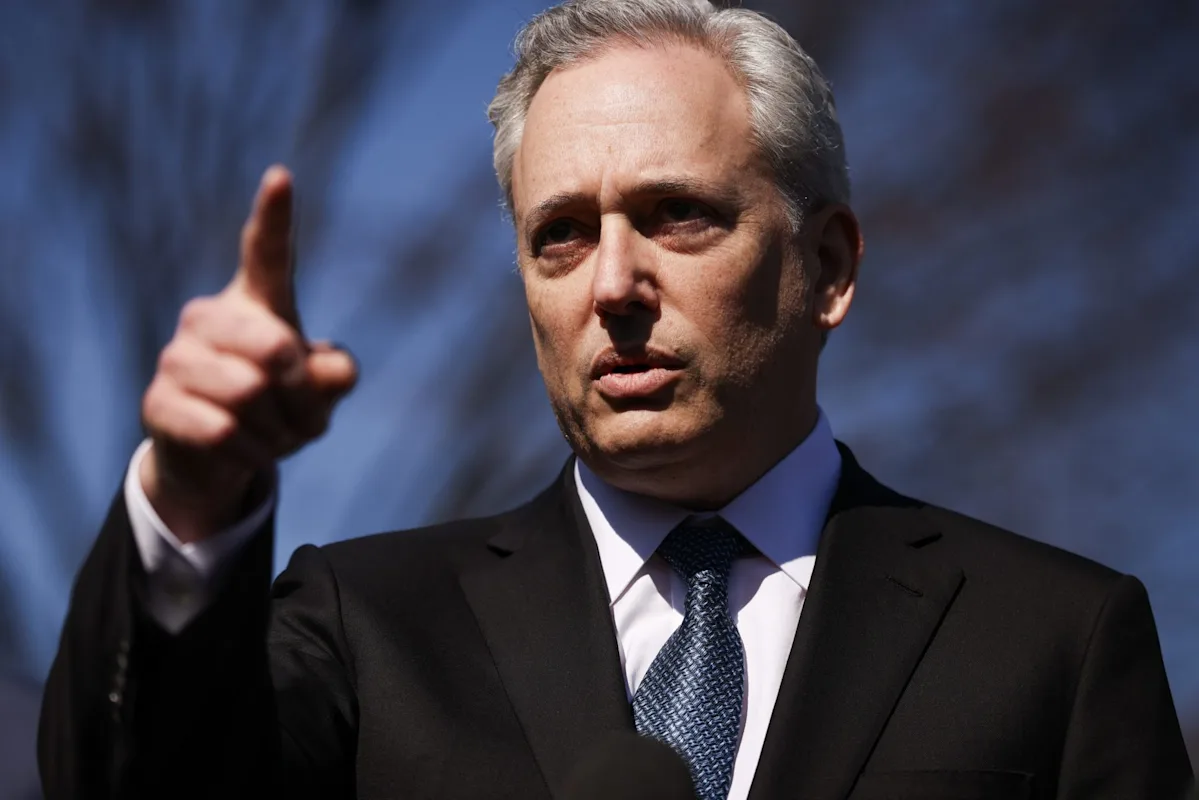In recent weeks, the discourse around artificial intelligence has taken an unexpected turn. According to David Sacks, who serves as the White House “AI & Crypto” czar under the Donald Trump administration, the growing public scepticism toward AI is not primarily rooted in genuine concerns about the technology itself — but instead driven by what he calls a “$1 billion plot” orchestrated by a so-called “Doomer Industrial Complex.”
Sacks argues that a coalition of activists, think-tanks, media figures and funders are actively working to stoke fear and negativity around AI in order to influence policy, regulation and public sentiment. The suggestion: the real adversary of AI progress is not malfunctioning algorithms, but a well-funded network of doom-sayers.
Below, we examine the substance of Sacks’ claim, its implications for AI policy and public discourse, and whether this narrative holds up under scrutiny.
The Claim: Who Are the “Doomers” and What Are They Doing?
According to Sacks, the “Doomer Industrial Complex” is a convenient label for a broad ecosystem of actors: non-profit organisations, advocacy groups, media outlets, academic centres, and philanthropies — all of which he says are aligned around a pessimistic view of AI’s future.
In his telling, the key elements are:
- These actors are receiving large sums of funding (Sacks references a figure of around $1 billion) to research, promote and publicise worst-case scenarios around AI: existential risk, job-less futures, runaway superintelligence, mass surveillance, and deep social disruption.
- Their output — reports, op-eds, conference panels, media segments — amplify fear, distrust and regulatory anxiety about AI, thereby shaping public perception and government responses.
- Because fear tends to drive policy more aggressively than optimism, this network has disproportionate influence in shaping regulatory regimes, slowing deployment, or pushing heavy-handed restrictions on AI infrastructure.
- Put simply: the enemy of AI progress, in this view, isn’t technical failure but negative narrative momentum.
Sacks contends this is not a fringe conspiracy theory but a real dynamic: “You don’t hate AI because of a thoughtful risk-analysis. You hate AI because someone paid to convince you it’s scary,” he suggests.
Why This Argument Matters
The proposition that a well-funded adversarial ecosystem is influencing AI perception matters for several reasons:
1. Deployment vs. delays
If AI infrastructure and applications are delayed or blocked, the consequence is not just slower innovation but possibly lost economic and strategic opportunities. The United States, in Sacks’ view, faces a global race — particularly with China — to lead in AI. Narrative-driven drag or over-regulation could become a strategic liability.
2. Regulation and policy
Public fear often translates into stronger regulatory responses. If the “doom” narrative dominates, governments may adopt precautionary or forbidding policies that raise compliance costs, slow growth, or favour incumbents. Sacks views the narrative battle as directly relevant to how regulation is formed.
3. Investment dynamics
Investor sentiment is also influenced by public mood and regulatory forecasting. If the narrative is increasingly gloomy, capital may retreat or shift toward safe bets, undermining the broader funding environment for AI startups.
4. Moral-political framing
The framing matters: if AI is portrayed first and foremost as a threat — rather than a tool — then ethical, political and social debates will lean toward restriction and mitigation rather than innovation and deployment. Sacks argues this is a misalignment of priorities.
The Evidence (and the Questions)
How sturdy is the claim? There are some data points and counterpoints worth unpacking.
Supporting indicators:
- Media and non-profit activity around AI risk has grown significantly in recent years — conferences, op-eds, podcasts, reports on existential risk, deepfakes, algorithmic bias, and AI in warfare.
- Philanthropic funding for AI safety and ethics has surged, suggesting a rising investment in this “doom-centric” side of the conversation.
- Regulatory initiatives around AI (in the EU, US, UK, etc.) increasingly reference worst-case-scenario framing: bias, disinformation, job displacement, AI in lethal autonomous weapons.
Questions and caveats:
- While funding for “AI risk” research is growing, the $1 billion figure is broad and not exhaustively documented. How much of that money is solely for “doom” narratives versus constructive risk mitigation?
- Scepticism about AI is not always the product of a funding campaign — there are wide-ranging genuine concerns from workers, ethicists, civil society and policymakers about real-world impacts. Dismissing all critiques as part of a campaign may underplay valid issues.
- The term “industrial complex” suggests an organised, self-sustaining system. Whether the ecosystem of risk-advocates has such coherence, coordination or common purpose as the term implies is arguable.
- Narrative influence is hard to isolate: many factors shape public opinion (media coverage, educational background, personal experience, economic disruption) — attributing it mainly to funding may oversimplify.
Implications for AI Discourse and Policy
If we accept, at least provisionally, that part of the AI- sceptical narrative is driven by a “doom” industry, the implications are significant.
Shaping public opinion:
Narratives matter. If the dominant public narrative frames AI primarily as a danger, then public tolerance for deployment, risk-taking or even incremental roll-out may shrink. That matters for everything from education-tech to healthcare AI to national infrastructure.
Policy direction:
In a climate of fear, policy may skew toward heavy oversight, liability burdens, slower approvals, or moratoriums. While risk-mitigation is important, Sacks argues that over-correction could suppress innovation or cede ground to less risk-averse jurisdictions.
Innovation & competition:
Sacks’ broader agenda emphasises national competitiveness: the U.S. must accelerate AI infrastructure, deployment and commercialisation to keep pace globally. If narrative and regulatory drag increases, it may constrain that ambition.
Balance of debate:
The framing of the discourse matters. Even if the “Doomer Industrial Complex” is overstated, Sacks’ challenge is that debates about AI need to be more balanced—acknowledging risks, yes—but also emphasising benefits, opportunities, pathways for safe growth rather than primarily restriction.
How to Navigate the Narrative Battlefield
For stakeholders—innovators, policymakers, citizens—the debate about AI may be less about technology and more about story-control. Here are some ways to engage:
- Ask for clarity on funding and motives: When advocacy groups, media pieces or think-tanks present alarmist claims, check sources and funding. How much is prevention-oriented versus fear-oriented?
- Distinguish between valid risk and alarmist framing: Many concerns about AI are serious and worth attention: bias, job disruption, misuse in warfare. But distinguishing credible risk scenarios from speculative doomsday framing is a key critical skill.
- Promote balanced public education: Rather than teaching AI as “dangerous future tech,” incorporate balanced curricula that cover both opportunities (healthcare, science, productivity) and risks, with nuance.
- Advocate for proportional regulation: Instead of defaulting to heavy-handed regulation, policymakers might aim for adaptive frameworks that calibrate oversight to risk levels, enable innovation and preserve competitiveness.
- Support infrastructure and deployment resilience: If one’s agenda is to accelerate AI deployment safely, the focus may shift to infrastructure build-out, talent training, power/data-centre capacity, alongside regulatory safeguards.
Conclusion
The claim that a “$1 billion Doomer Industrial Complex” is behind much of the public fear of AI may sound conspiratorial — yet it raises a meaningful question: who is shaping the narrative about AI, and to what end? Whether or not the figure and label hold in full, the larger point stands: narratives matter. If AI is framed primarily in terms of fear and risk, then policies, investment, and public sentiment will follow.
In this light, David Sacks’ intervention highlights a frontline in the battle for how AI is perceived, regulated and deployed. The technology is not just a set of algorithms or data-centres; it is also a story — about risk, progress, power and the future. Ensuring that story is balanced, informed and aligned with both opportunity and caution may be among the most important tasks of the moment.
Whether one agrees with Sacks’ characterisation or not, the takeaway is that the public-policy conversation about AI must wrestle not only with hardware and software, but with narratives, incentives, and the power of persuasion. In the AI era, you don’t just build the engine — you also build the story.







